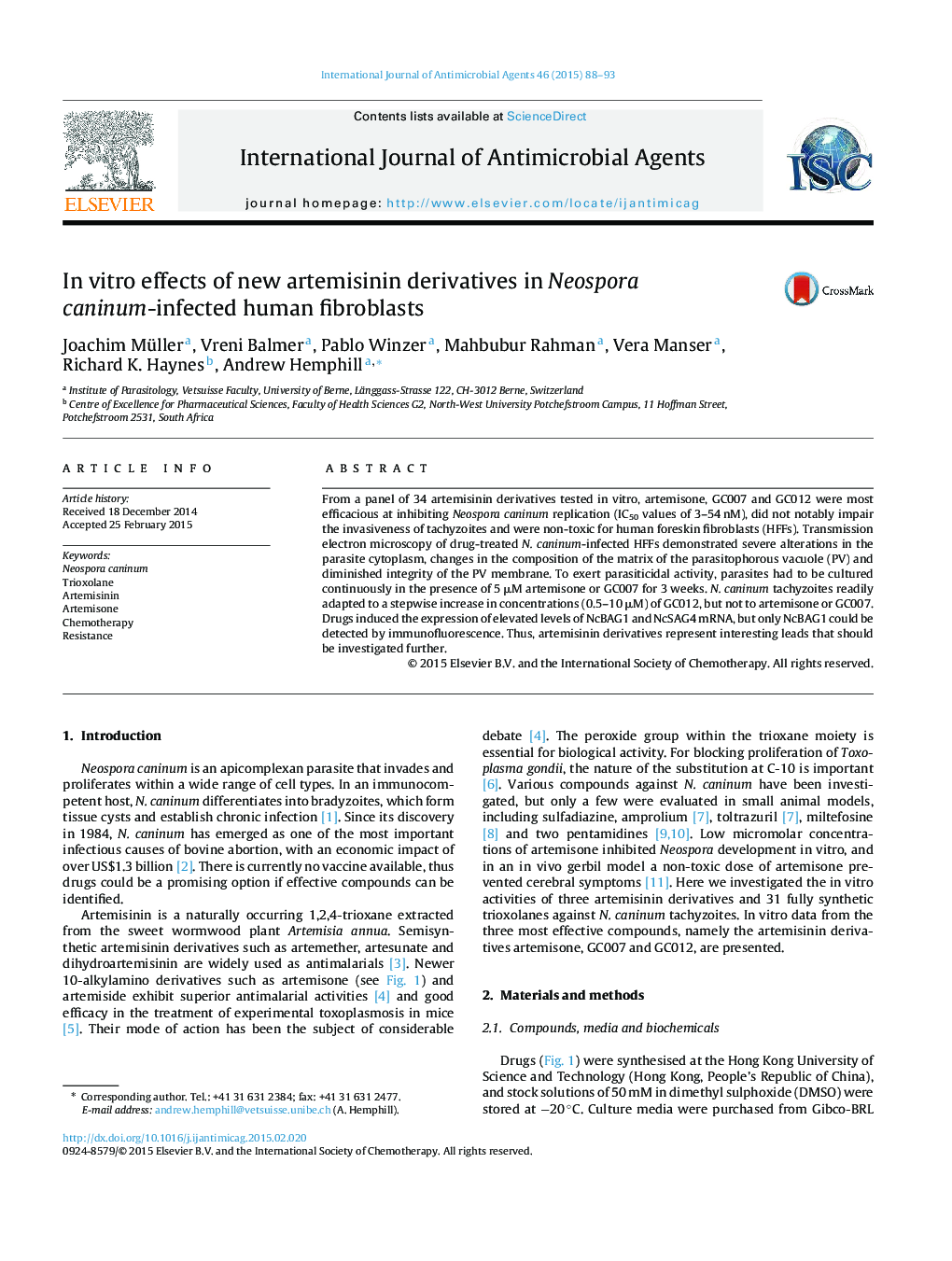| Article ID | Journal | Published Year | Pages | File Type |
|---|---|---|---|---|
| 3358629 | International Journal of Antimicrobial Agents | 2015 | 6 Pages |
•Artemisone and two derivatives (GC007 and GC012) exhibited anti-Neospora in vitro activity in a low (3–54 nm) nanomolar range.•For parasiticidal activity, continuous culture in the presence of 5 μM for 3 weeks was required.•Neospora readily adapted to GC012, but not to artemisone or GC007.•TEM demonstrated drug-induced changes in the cytoplasm and in the parasitophorous vacuole and its membrane.•In vitro treatment resulted in increased expression of NcBAG1 and NcSAG4 mRNA.
From a panel of 34 artemisinin derivatives tested in vitro, artemisone, GC007 and GC012 were most efficacious at inhibiting Neospora caninum replication (IC50 values of 3–54 nM), did not notably impair the invasiveness of tachyzoites and were non-toxic for human foreskin fibroblasts (HFFs). Transmission electron microscopy of drug-treated N. caninum-infected HFFs demonstrated severe alterations in the parasite cytoplasm, changes in the composition of the matrix of the parasitophorous vacuole (PV) and diminished integrity of the PV membrane. To exert parasiticidal activity, parasites had to be cultured continuously in the presence of 5 μM artemisone or GC007 for 3 weeks. N. caninum tachyzoites readily adapted to a stepwise increase in concentrations (0.5–10 μM) of GC012, but not to artemisone or GC007. Drugs induced the expression of elevated levels of NcBAG1 and NcSAG4 mRNA, but only NcBAG1 could be detected by immunofluorescence. Thus, artemisinin derivatives represent interesting leads that should be investigated further.
Graphical abstractFigure optionsDownload full-size imageDownload high-quality image (251 K)Download as PowerPoint slide
